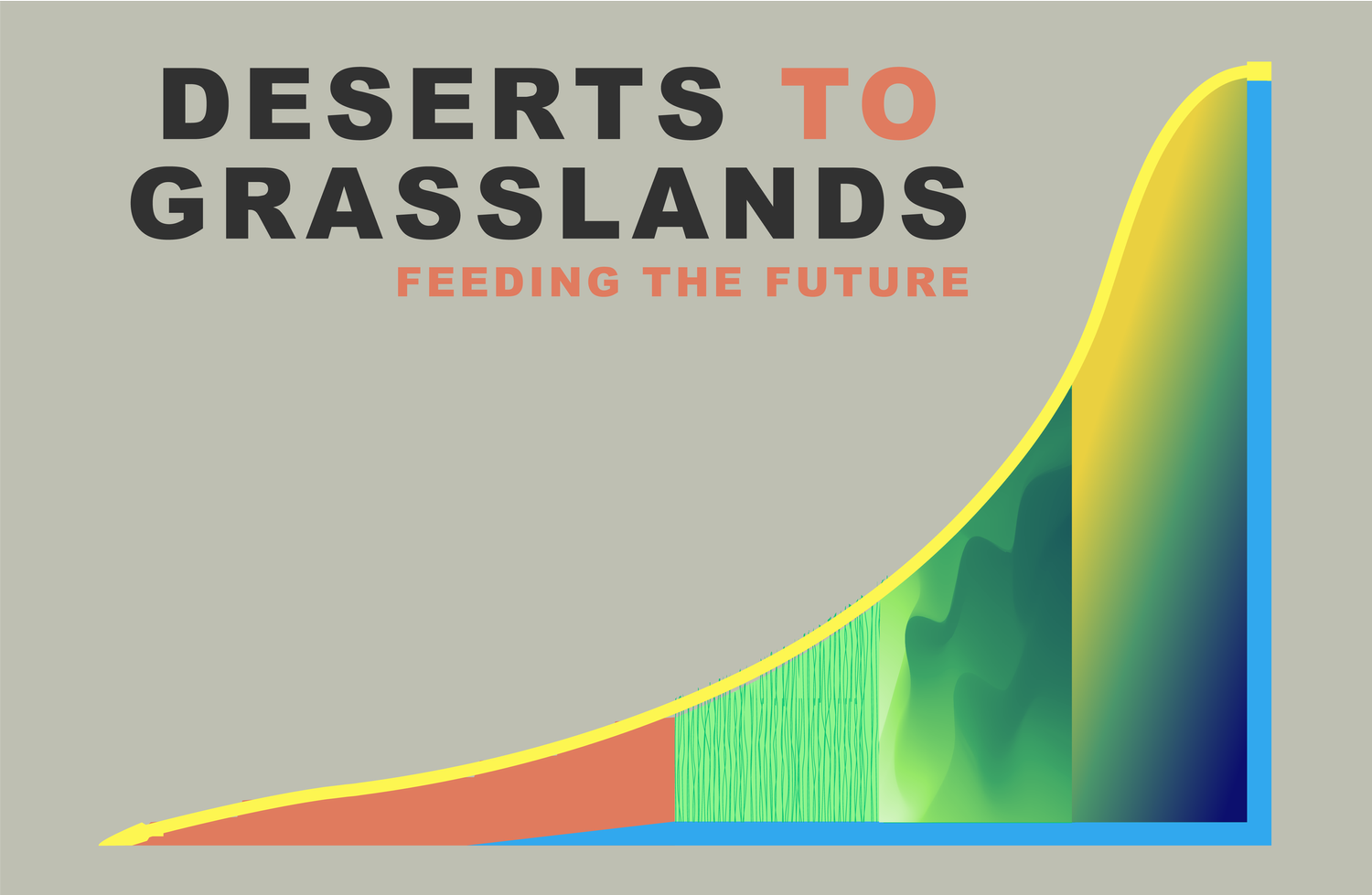DESERTS TO GRASSLAND
FEEDING THE FUTURE
HOW IT WORKS
Our mission is to green the deserts in the world as quickly as possible and in a profitable way while feeding people.
After 30 years of experimenting all over the world from Africa to Australia to Canada and the US, we have finally discovered how to consistantly green the desert without the need for irrigation.
DESERT TO GRASSLAND PODCAST
FAQ - DESERT TO GRASSLANDS
-
We use special breeds of cattle that are very used to hot, dry desert. We also use portable shade cloth and misters. Our priority is making sure that the cattle are healthy and happy.
Cattle aren’t the only animals on the land. We also run chickens at the same time.
The mobile chicken accommodations that we will be designing will provide shade and misters for the cattle as well.
-
Initially, we will be growing the bio-diverse, soil building, carbon sequestering forage nearby under irrigation to feed the cattle.
Once the feed is cut, it can be compressed into silage or it can be fed fresh depending on the nutrional needs of the cattle. We will truck it to the cattle and feed them 2-3 hours from when it was cut.
-
The Salton Sea sits in between two mountain ranges. It currently only receives 2-3 inches of rain a year. We know from our calculations, observations and research that once we green at least 150,000 acres that we will change the micro water cycle. When we change the micro water cycle, we'll start producing 8-9 inches of rain a year. We'll also signficantly cool the area and replenish aquifers.
-
If cattle are kept in a feed lot then yes, you will have problem with methane. When cattle are allowed to move and you work with nature as as intended, then methane is a subsystem. No additonal methane is produced. A good book to understand the science behind this is "Should Meat Be on the Menu".
-
A Biocarpet is a term that Rodger Savory coined. A biocarpet is a layer of dung and urine from livestock that is thick enough to provide protection to the soil from the harmful UV rays of the sun while also holding moisture in the soil allowing seeds to germinate. Because it is like a thick paste, it has the added benefit of preventing evaporation. The rumen in cattle also are a whole microbe factory that contains bacteria, protozoa and fungi which is what the sands in the desert are complelely lacking. A nice thick layer of biocarpet is the perfect environment (warm, wet, dark) to get the fungi started again and start creating soil!


